The money
What is money?
It is something accepted as being valuable by everybody in a collectivity. It is also easily transported, fractionable and perfectly preserved (it does not get rotten). Thanks to these four features, it can be used to:
- accumulate wealth.
- make exchanges.
Throughout the history of humans, all kind of materials have been used as money. The most frequent ones have been the gold, the silver and the copper.
"El real de a ocho"
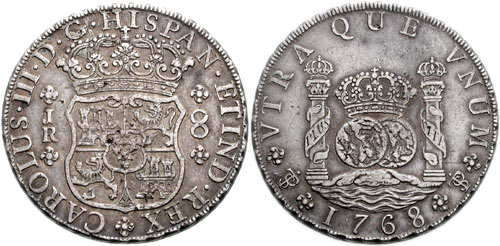
This coin above was called "el real de a ocho", the piece of eight. It was made of silver and it weighed 25 grams."El real de a ocho", as its name suggests, was worth eight reales. The real de a ocho (also known as "peso fuerte") was the Spanish currency for centuries.
"El real de a ocho" was a coin that was very much used in international exchanges due to the purity of its silver. Therefore, at the end of the 18th century it was everybody's favourite coin due to its reliability.
If you would like more information about the history of the Spanish monetary system, see section SOURCES. FUENTES.
The paper money
During the 19th century the use of the paper money became widespread. The notes were just vouchers printed by a bank that could be exchanged by gold or silver in any of the branches of that bank.
See below a 55 US dollar note:
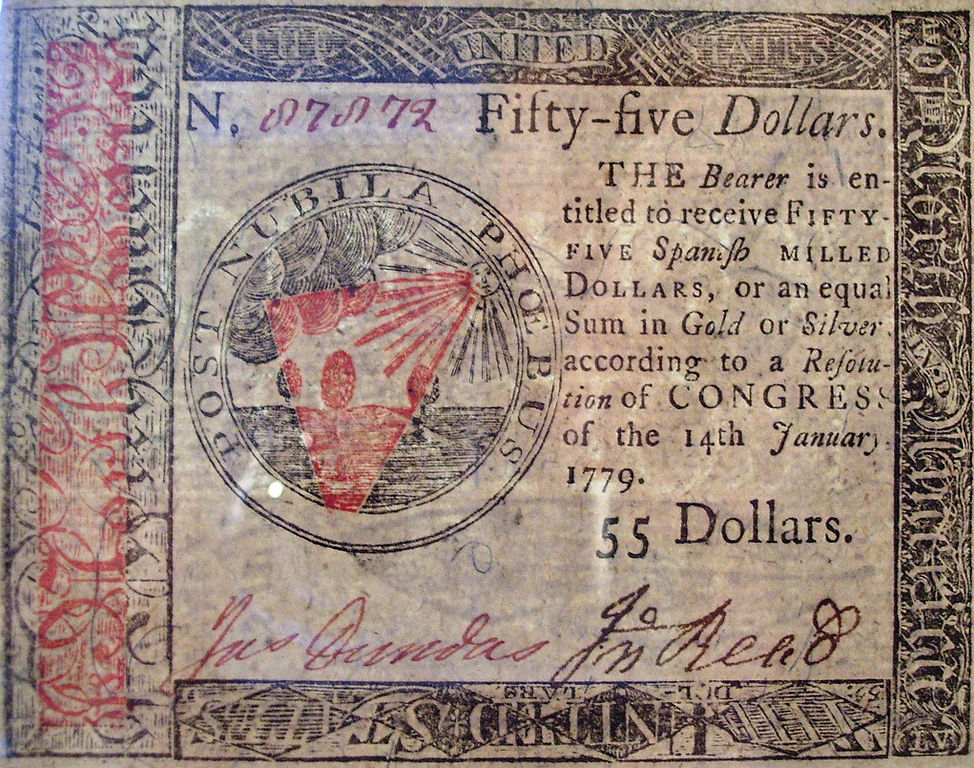
The text of the note says: "The bearer is entitled to receive 55 Spanish dollars (reales de a ocho), or an equal part in Gold or Silver according to a Congress resolution of 14th January, 1779"
During the 19th century and most of the 20th century, the paper notes were just vouchers that could be theoretically exchanged by their value in gold or silver at the banks where those notes had been printed.
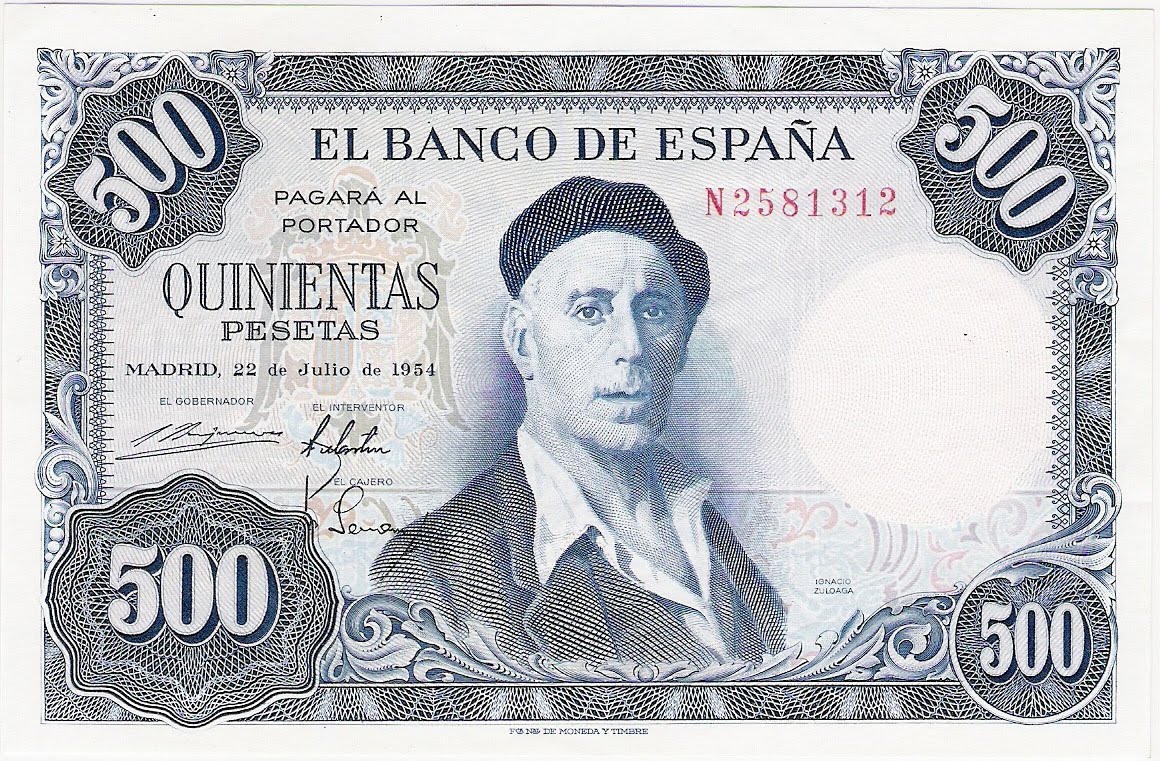
At the end of the 19th century, the power to print paper notes was exercised by just one bank: The central bank of the country in question. In our case, the Bank of Spain. In the United States, The Federal Reserve.
When did the gold-silver standard disapperar?
Since about 1970, the banknotes are not exchangeable in gold and silver (not even in a theoretically way).
In Spain, the official currency producer (la Fábrica Nacional de Moneda y Timbre) was ruled by the Bank of Spain which in turn was ruled by the Government.
Nowadays (and since 2002) the official currency producer is ruled by the European Central Bank, located in Frankfurt (Germany). Therefore, the "machine to make money" is completely out of our control.
What happens if a Government makes a lot of notes?
Indeed, since there is no obligation to exchange the paper notes in silver or gold, a government could be tempted to make a lot of notes and thus, becoming richer overnight. but it is not that simple:
If a lot of paper money is printed and issued, the immediate result is an increase in prices. This is known as hyperinflation.
The most notable case of hyperinflation took place in Germany 1921. In order to settle its debts, the German government of that time had the great idea of using the machine to make money. The result was a galloping hyperinflation. Prices increase overnight, reaching unprecedented heights. Thus, an ordinary postage stamp got to cost...ten million Deutsche mark!
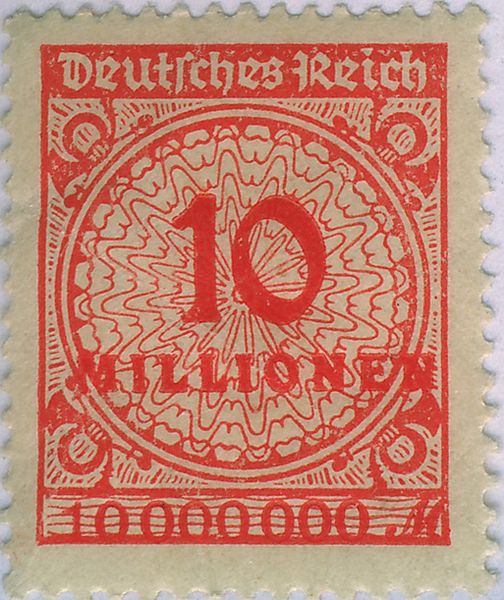
Finally, the German paper money stopped being reliable and the Germans started to use foreign coin to exchange or they simply did barters.
To know more about German hyperinflation, click here: http://wp.me/p1qpOJ-pS
The banks
As you know, the banks are companies (Public Limited Companies) whose business consists of mainly two things:
- Keep your money safely.
- Loan money at a rate of interest (that is, the customer has to give the money back plus interests).
The big banks accumulate a great deal of money coming from people's savings. But if all the small savers took out their money at the same time, the banks would go bankrupt.
The power of the banks is enormous because they give loans to political parties and even to governments. Therefore, the political power is submitted by the power of banks (financial power).
Money fields... moving.
A variety of the banks' business is that one known as investment funds and pension funds.
- From the following source, write a definition for pension funds and investments fund. Don't forget to mention clearly where they get the money they handle from, what they offer in return, and what they do with it.
- What is the GDP of Spain? How much capital does Allianz Group, Axa Group y Deutsche Bank accumulate respectively?
- Make a digital presentation about these three companies.
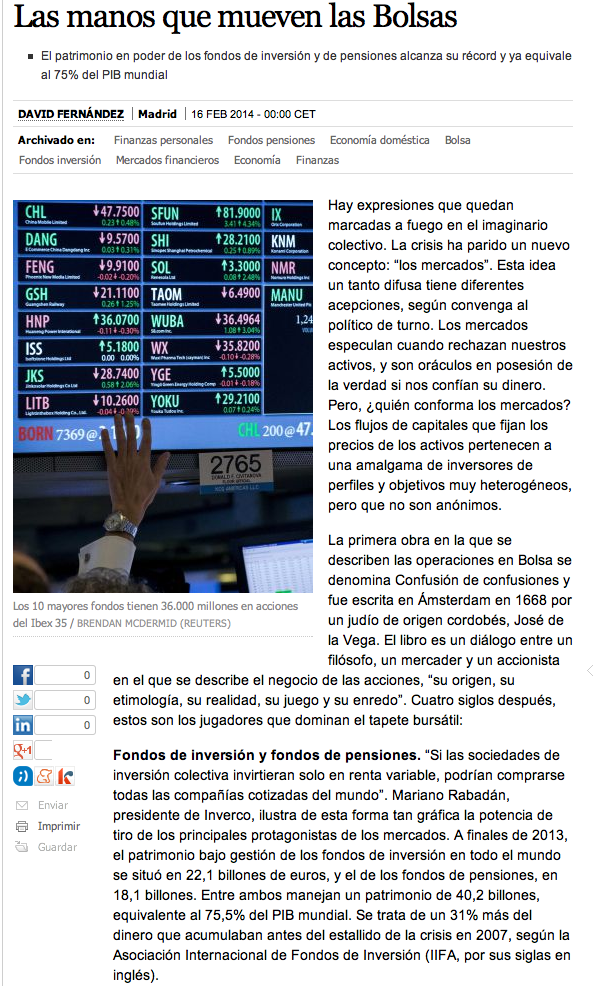
What is a tax haven?
Research and find out what a tax haven is. Show the results in your digital presentation and send it to your teacher.
About the euro...
- Which countries have the euro as the official coin?
- What picture is shown in the Italian coin of 1€? and in the greek coin of 1€?